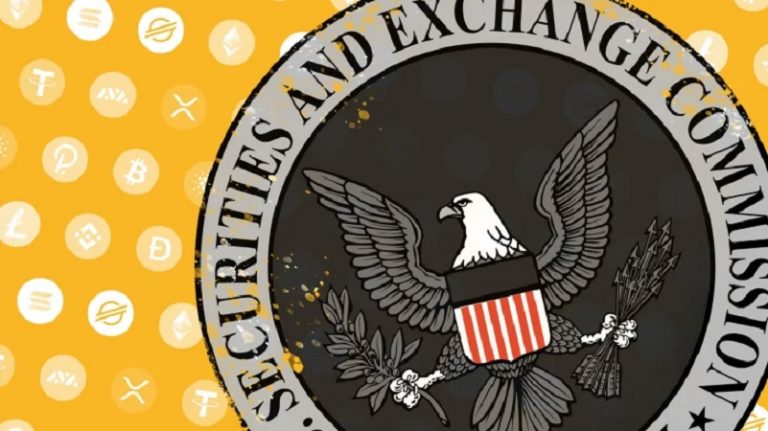
The SEC’s Division of Corporation Finance issued a statement clarifying that “Protocol Staking Activities,” such as staking crypto assets in a proof-of-stake blockchain, do not require registration under the Securities Act, as staking rewards are viewed as compensation for services provided by node operators, not profits derived from the entrepreneurial or managerial efforts of others, as defined by the Howey Test.
SEC Commissioner Hester Peirce supported this guidance, noting it provides “welcome clarity for stakers and staking-as-a-service providers in the United States,” addressing previous regulatory uncertainty that discouraged participation in network consensus and decentralization. However, Commissioner Caroline Crenshaw dissented, arguing the guidance lacks a robust framework for determining whether staking services constitute investment contracts under existing laws.
Separately, the SEC’s Division of Corporation Finance issued guidance on February 27, 2025, stating that memecoins—crypto assets inspired by internet memes, characters, or trends—are not securities but are akin to collectibles. This aligns with comments from Commissioner Hester Peirce, who, in a February 11, 2025, Bloomberg interview, stated that “many of the memecoins out there probably do not have a home in the SEC under our current set of regulations.”
Register for Tekedia Mini-MBA edition 18 (Sep 15 – Dec 6, 2025) today for early bird discounts. Do annual for access to Blucera.com.
Tekedia AI in Business Masterclass opens registrations.
Join Tekedia Capital Syndicate and co-invest in great global startups.
Register to become a better CEO or Director with Tekedia CEO & Director Program.
The SEC clarified that memecoins typically lack utility or functionality and do not meet the Howey Test criteria for securities, as they do not involve an investment in a common enterprise with an expectation of profits from others’ efforts. Instead, their value is driven by speculative trading and market sentiment, similar to collectibles. However, the SEC noted that memecoins designed to evade securities laws by disguising products that would otherwise be securities could still face enforcement action.
These developments reflect a shift under the SEC’s current leadership, led Chairman Paul Atkins and supported by Peirce’s Crypto Task Force, toward providing clearer regulatory frameworks for crypto assets, moving away from the enforcement-heavy approach of the prior administration. The SEC’s guidance that staking activities on proof-of-stake (PoS) blockchains are not securities transactions provides regulatory certainty for node operators and staking-as-a-service providers. This could encourage broader participation in blockchain networks, fostering decentralization and innovation in the U.S. crypto ecosystem.
By classifying staking rewards as compensation for services rather than securities-derived profits, the guidance may reduce compliance costs for staking providers, who previously faced uncertainty about registration requirements under the Securities Act. This could attract more institutional and retail participation in PoS networks like Ethereum. The clarity may help the U.S. compete with jurisdictions like the EU, which have clearer crypto regulations (e.g., MiCA). Previously, regulatory ambiguity drove some staking operations offshore.
Commissioner Crenshaw’s dissent highlights a risk that the guidance may be too permissive, potentially allowing some staking arrangements to evade securities laws if structured to exploit loopholes. This could lead to future enforcement actions if the SEC perceives abuse. Classifying memecoins as collectibles, not securities, removes them from SEC oversight under current regulations, potentially spurring innovation and trading in this niche. This could boost speculative markets, as memecoins like Dogecoin or Shiba Inu thrive on community-driven hype and market sentiment.
The lack of SEC oversight for memecoins may expose retail investors to heightened risks, as their value is driven by speculation rather than fundamentals. Pump-and-dump schemes or fraudulent promotions could proliferate without regulatory guardrails. The SEC’s stance that memecoins resembling securities could face enforcement action creates a gray area. Projects must carefully design memecoins to avoid characteristics of investment contracts, which could lead to legal disputes if the SEC deems a memecoin’s structure evasive.
Peirce’s comparison to collectibles aligns memecoins with cultural artifacts like NFTs or trading cards, potentially legitimizing their role in digital culture while distancing them from traditional financial instruments. The guidance reflects a philosophical split within the SEC. Commissioners like Hester Peirce and Acting Chairman Mark Uyeda advocate for innovation-friendly policies, emphasizing the need for clear rules to support the crypto industry’s growth. Peirce’s Crypto Task Force, established under Atkins ’s leadership.
Commissioner Caroline Crenshaw’s dissent on the staking guidance underscores a cautious approach, prioritizing investor protection and robust legal frameworks. She argues that staking arrangements could still meet the Howey Test in certain contexts, reflecting concerns that broad exemptions might undermine securities laws. The divide highlights a transitional phase at the SEC under new leadership.
The shift toward guidance over enforcement contrasts with the Gary Gensler era’s aggressive actions against crypto firms, signaling a potential softening of regulatory scrutiny but with lingering disagreements on scope. Crypto industry players, including blockchain developers and exchanges, welcome the clarity, as it reduces compliance burdens and encourages U.S.-based innovation. However, consumer protection advocates worry that looser oversight, especially for memecoins, could expose investors to fraud or market manipulation.
The guidance aligns with a broader political shift post-2024 U.S. elections, where pro-crypto sentiment has grown. Congressional efforts to pass crypto-specific legislation (e.g., FIT21) and the influence of crypto-friendly lawmakers may have pressured the SEC to adopt a more permissive stance. The U.S. risks falling behind jurisdictions with established crypto frameworks (e.g., EU’s MiCA, Singapore’s regulations) if internal SEC disagreements delay cohesive policy. The divide could slow progress toward comprehensive crypto regulation, leaving gaps in investor protection and market stability.
The SEC’s guidance is a step toward regulatory clarity, but the internal divide suggests ongoing debates about how to balance innovation with investor safety. Future guidance or rulemaking will likely face scrutiny from both pro-crypto advocates and traditional financial regulators. For staking, expect increased adoption but potential challenges if enforcement actions target edge cases.
For memecoins, speculative trading may surge, but high-profile scams could prompt the SEC to refine its stance or Congress to intervene with targeted legislation. This split within the SEC mirrors broader tensions in the crypto space: fostering innovation while mitigating risks in a rapidly evolving market.



